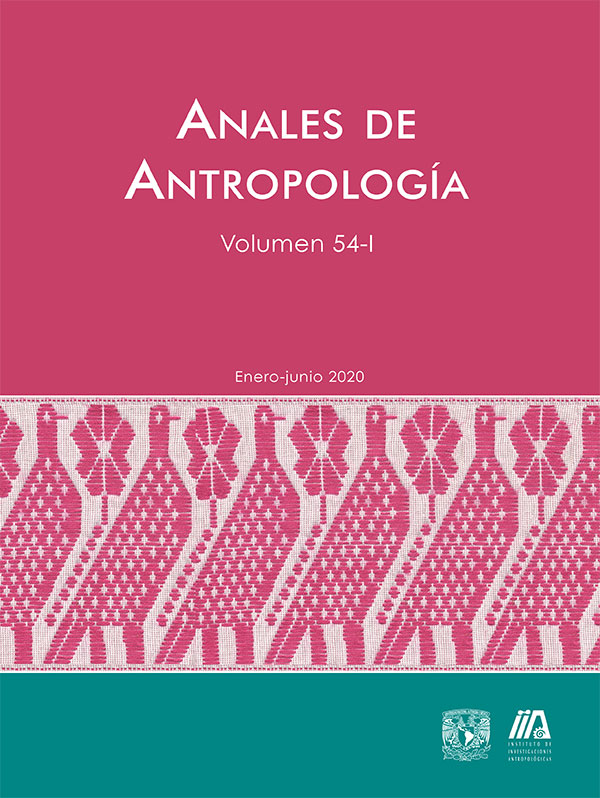Representativeness and selectivity in Monte Albán. A problem to reflect
Main Article Content
Abstract
Monte Albán is a Zapotec settlement dating to 500 BC – 850 AD, and which is located in the Central Valleys of Oaxaca. In this site as in other Mesoamerican settlements, the variety and quantity of mortuary deposits is very diverse. This diversity has been affected by the various strategies of excavation employed by researchers and by differential mortuary treatment and taphonomic processes. It is useful to consider what parts of the site’s population Monte Albán’s skeletal collection (n=410) represents, in a statistical and sociodemographic sense. Furthermore, what and what selectivity criteria have been employed for this collection? The objective of our paper is to discuss and reflect on aspects of representativeness and selectivity, together with the archaeological context of the human remains recovered. We use cluster analysis to show the differences in the composition of the buildings excavated at Monte Albán according to variables such as the number of excavated rooms, the number of individuals, sex, age, and especially the spatial context and temporality. Our results show a problem shared throughout Mesoamerica, where large biases are observed in the composition of the sample according to temporality and space, which leads us to discuss the selectivity of the sample and the role of isolated bone elements.
Downloads
Article Details
Citas en Dimensions Service
Esta revista usa una licencia CC del tipo CC BY-NC-ND 3.0. Se maneja bajo el esquema de acceso abierto, con una licencia Creative Commons Attribution-NonCommercial-NoDerivs 3.0 Unported.
